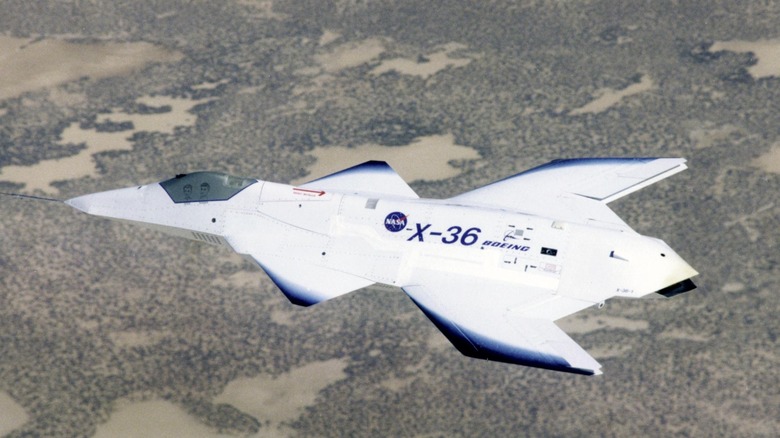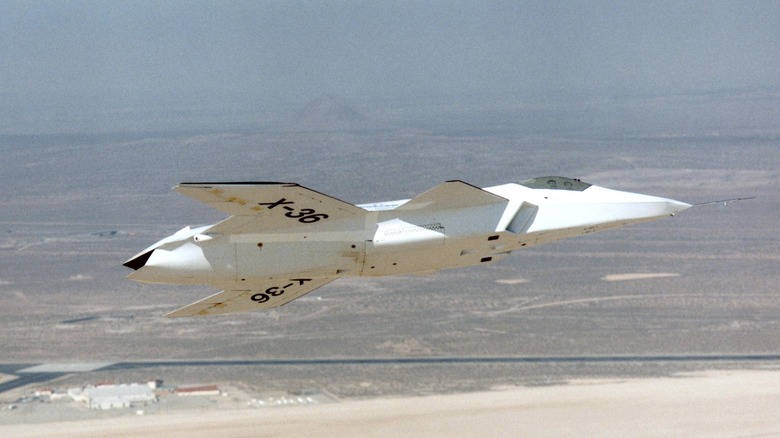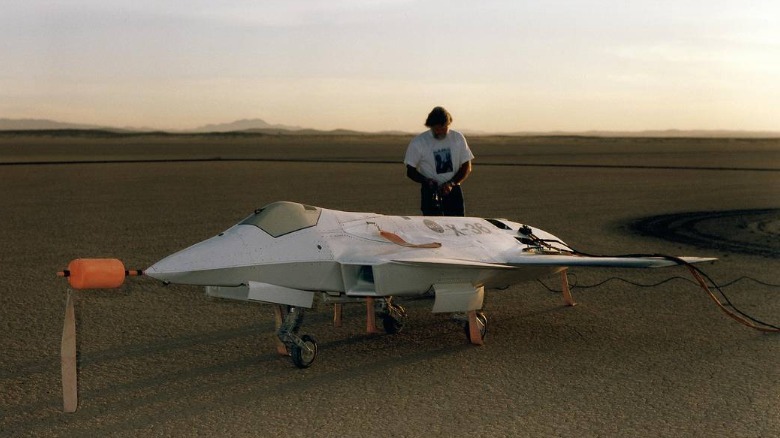Boeing X-36: The Futuristic Fighter Jet With Incredible Agility
Most fighter jets you'll see, including the ultra-advanced F-22 Raptor all, have one thing in common: some sort of tail or vertical stabilizer. Tails help stabilize the aircraft in flight, but bombers like the stealth B-2 Spirit have forgone tails in favor of a "flying wing" design. The B-2, however, is stealthy and quick enough to get on a mission, but it wasn't built for a direct air-to-air combat role. Tailless jets have been fielded in the past with mixed results. In further research of tailless aircraft for a fighter role, NASA experimented with the Boeing X-36, an aircraft that at least on the surface, shares a lot of visual cues with modern jets. But operationally, it's a world of differences.
The X-36 was never a full-size fighter jet — it was a 28 percent scale copy of what the future fighter jet utilizing the technology might look like. As such, it was only 19 feet long and had a wingspan of 10 feet. It also only weighed 1,250 pounds and its engine only put out 700 pounds of thrust. For comparison, an F-22 Raptor is over 62 feet long, has a wingspan of over 44 feet, weighs 43,340 pounds and its two engines put out a combined 70,000 pounds of thrust. Despite the fact it was just a scale model, NASA learned some valuable lessons and collected a veritable ton of data from the X-36.
A scale model of success
In addition to brainstorming and testing new airframe ideas for future fighter jets, the X-36 tested the Air Force's Reconfigurable Control for Tailless Fighter Aircraft software. That software allowed the plane to remain in flight even after losing control surfaces by using neural net processing to make other controls pick up the slack if a rudder, flap, or any other control surface on the jet went down. This software was tested with great success on two different flights in 1998.
The X-36 only flew from May to November of 1997 for a total of unmanned remote control 31 flights. The relatively short history of the plane was promising. It handled significantly better than expected despite not having a tail. Most fighter planes struggle with maneuverability at either end of the speed spectrum. If you're going too slow, you won't have enough speed to stay aloft, if you're going too fast, you sacrifice agility for straight-line speed. The X-36, on the other hand, excelled in performing at high speeds and low speeds during all tests, proving itself to be remarkably maneuverable and agile.
Alas, the X-36 program has not been revived since its last flight nearly 25 years ago and all modern fighter jets designs include a tail.


